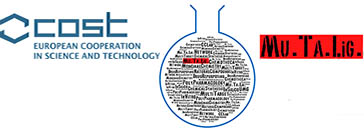
General information
| Name: Vittorio |
| Surname: Limongelli |
| E-mail: limonv@usi.ch |
| Cell phone number with international prefix: +41 762695581 |
| Country: Switzerland |
| Affiliation: Universita’ della Svizzera Italiana (USI) |
| Gender: F □ M X |
| Year of the PhD title: 2007 |
| Personal web page: https://sites.google.com/site/vittoriolimongelli/home |
| Previous COST participation: No X Yes □ |
List of 10 selected publications within last 5 years
| 1. Casasnovas, Vittorio Limongelli, T. Pratyush, P. Carloni, M. Parrinello. Unbinding kinetics of a p38 MAP kinase type II inhibitor from metadynamics simulations. J. Am. Chem. Soc., 2017. 139, 4780-4788, ISSN: 0002-7863, doi: 10.1021/jacs.6b12950. |
| 2. F. Moraca, J. Amato, F. Ortuso, A. Artese, B. Pagano, E. Novellino, S. Alcaro, M. Parrinello, Vittorio Limongelli. Ligand binding to telomeric G-quadruplex DNA investigated by funnel-metadynamics simulations. Proc. Natl. Acad. Sci. U. S. A., 2017. 114, E2136-E2145, ISSN: 0027-8424, doi: 10.1073/pnas.1612627114 (corresponding author) |
| 3. M. Lelimousin, Vittorio Limongelli, M.S.P. Sansom. Conformational changes in the epidermal growth factor receptor: role of the transmembrane domain investigated by Coarse-Grained metadynamics free energy calculations. J. Am. Chem. Soc., 2016. 138, 10611-10622, ISSN: 0002-7863, doi: 10.1021/jacs.6b05602. (corresponding author) |
| 4. F.S. Di Leva, C. Festa, B. Renga,V. Sepe, E. Novellino, S. Fiorucci, A. Zampella, Vittorio Limongelli. Structure-based drug design targeting the cell membrane receptor GPBAR1: exploiting the bile acid scaffold towards selective agonism. Sci. Rep., 2015. 5, 16605, ISSN: 2045-2322. doi: 10.1038/srep16605 ISSN: 2045-2322. (corresponding author) |
| 5. P. Tiwary, Vittorio Limongelli, M. Salvalaglio, M. Parrinello. Kinetics of protein-ligand unbinding: predicting pathways, rates and rate-limiting steps. Proc. Natl. Acad. Sci. U. S. A., 2015. 112, 386-391, ISSN: 0027-8424, doi:10.1073/pnas.1424461112 |
| 6. L. Troussicot, F. Guillière, Vittorio Limongelli, O. Walker, J.M. Lancelin. Funnel-Metadynamics and Solution NMR to Estimate Protein-Ligand Affinities. J. Am. Chem. Soc., 2015. 137, 1273-1281, ISSN: 0002-7863, doi: 10.1021/ja511336z |
| 7.F.S. Di Leva, E. Novellino, A. Cavalli, M. Parrinello, Vittorio Limongelli. Mechanistic Insight into Ligand Binding to G-quadruplex DNA. Nucl. Acids Res., 2014. 42, 5447-5455. ISSN 1362-4962, doi:10.1093/nar/gku247 (corresponding author) |
| 8. C. D’Amore, F.S. Di Leva, V. Sepe, B. Renga, C. Del Gaudio, M.V. D’Auria, A. Zampella, S. Fiorucci, Vittorio Limongelli. Design, Synthesis, and Biological Evaluation of Potent Dual Agonists of Nuclear and Membrane Bile Acid Receptors. J. Med. Chem., 2014. 57, 937-954. ISSN: 0022-2623, doi: 10.1021/jm401873d. (corresponding author) |
| 9. Vittorio Limongelli, M. Bonomi, and M. Parrinello. Funnel metadynamics as accurate binding free-energy method. Proc. Natl. Acad. Sci. U. S. A., 2013, 110, 6358-6363. ISSN: 0027-8424, doi: 10.1073/pnas.1303186110. (corresponding author) |
| 10. Vittorio Limongelli, L. Marinelli, S. Cosconati, C. La Motta, S. Sartini, L. Mugnaini, F. Da Settimo, E. Novellino, and M. Parrinello. Sampling protein motion and solvent effect during ligand binding. Proc. Natl. Acad. Sci. U. S. A., 2012, 109, 1467-1472. ISSN: 0027-8424, doi: 10.1073/pnas.1112181108. (corresponding author) |
Main skills and expertise (up to 5)
| 1. Computational Biology |
| 2. Drug Design |
| 3. Molecular Dynamics |
| 4. Free Energy Calculations |
| 5. Molecular Docking |
Main equipment/facilities available in the participants’ lab (up to 5)
| 1. A CPUs cluster (336 cores) at our Institute (Institute of Computational Science, University of Lugano USI) |
| 2. Access to computing power at the Swiss National Supercomputing Centre (CSCS) |
| 3. 1 workstation configured with two Intel Processor Xeon DP 6 and three GPUs NVIDIA GeForce GTX 980 |
| 4. 1 Data Storage da 72 TB |
| 5. |
Short personal activity proposal for the COST Action CA15135 (max 1000 characters)
| The Limongelli Research Group (LRG) is specialised in standard and advanced calculations applied to pharmacologically relevant systems, however paying great attention to the experimental facts. In the present COST Action Prof. Limongelli will devote his expertise in investigating and predicting the binding properties of ligands to their molecular targets in the identification of multi-target ligands (Work Group 3 and 4). In this framework he will use among the others a new enhanced sampling method, called funnel-metadynamics, that he developed to characterise the whole binding process of a ligand to its target, providing also an accurate estimate of its binding free energy (Limongelli et al. PNAS 2013). An extension of these calculations allows also retrieving kinetic information from the simulation providing an accurate estimate of binding (kon) and unbinding (koff) rate of the ligand towards its target (Tiwary, Limongelli et al. PNAS 2015). All this information is of great value for Drug Discovery and for understanding the molecular bases of the binding event. These methodological advances and the strong expertise of the LRG in Medicinal Chemistry, namely in the design of new active ligands, will contribute to achieve the goals of this COST Action.
The participation of the LRG in the COST Action will be based on mutual benefits in scientific and technological issues. LRG is already involved in many international collaborations with relevant research groups across Europe such as the Prof. Mark Sansom’s group at University of Oxford (U.K.) and the Prof. Carmine Settembre’s group at TIGEM (Telethon Institute of Genetics and Medicine), Naples (Italy). The high quality research carried out in the LRG, reflected by publications on high-impact journals (e.g. Limongelli et al. PNAS 2010, Limongelli et al. Angew. Chem. Int. Ed. 2013), and its collaboration network certainly represents a resource for the activities organized within the COST Action. Prof. Limongelli will be involved and propose the organization of seminal conferences and workshops on computer-aided drug design and advanced calculations on pharmacologically relevant systems. As done in a recent CECAM workshop (Understanding the functions of proteins in membranes by atomistic and multiscale MD simulations) organized by Prof. Limongelli, in all the meetings there will be room dedicated to integrate theoretical experts with experimentalists (e.g. pharmacologists, chemical synthesis experts). This interaction is fundamental to favour the synergy and collaboration between participants with the aimed at achieving relevant findings in the shortest time. |
Work Group preference: score from 1 (preferred) to 4 (not preferred)
| Work Group of the CA15135 COST Action | Score |
| WG1: Development of new chemical entities | 3 |
| WG2: Selection of biological targets and assessment of biological data | 3 |
| WG3: Development of chemical databases | 1 |
| WG4: Development of Computational methods for multiple ligand design and discovery | 1 |
